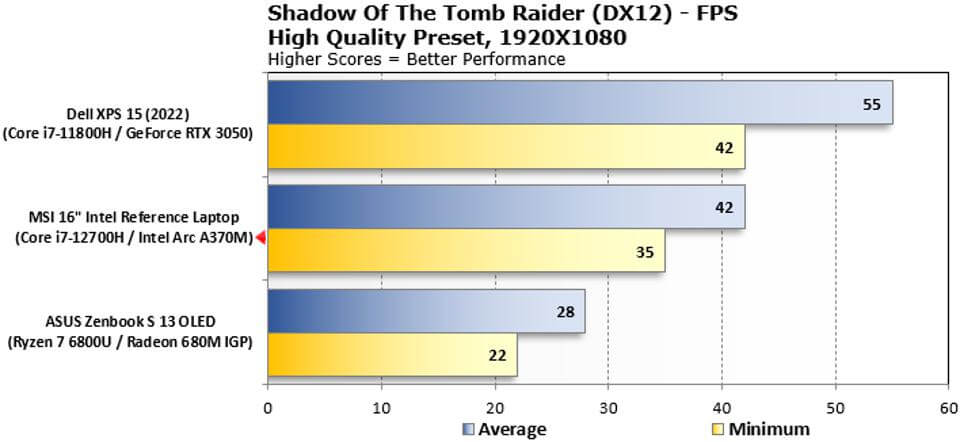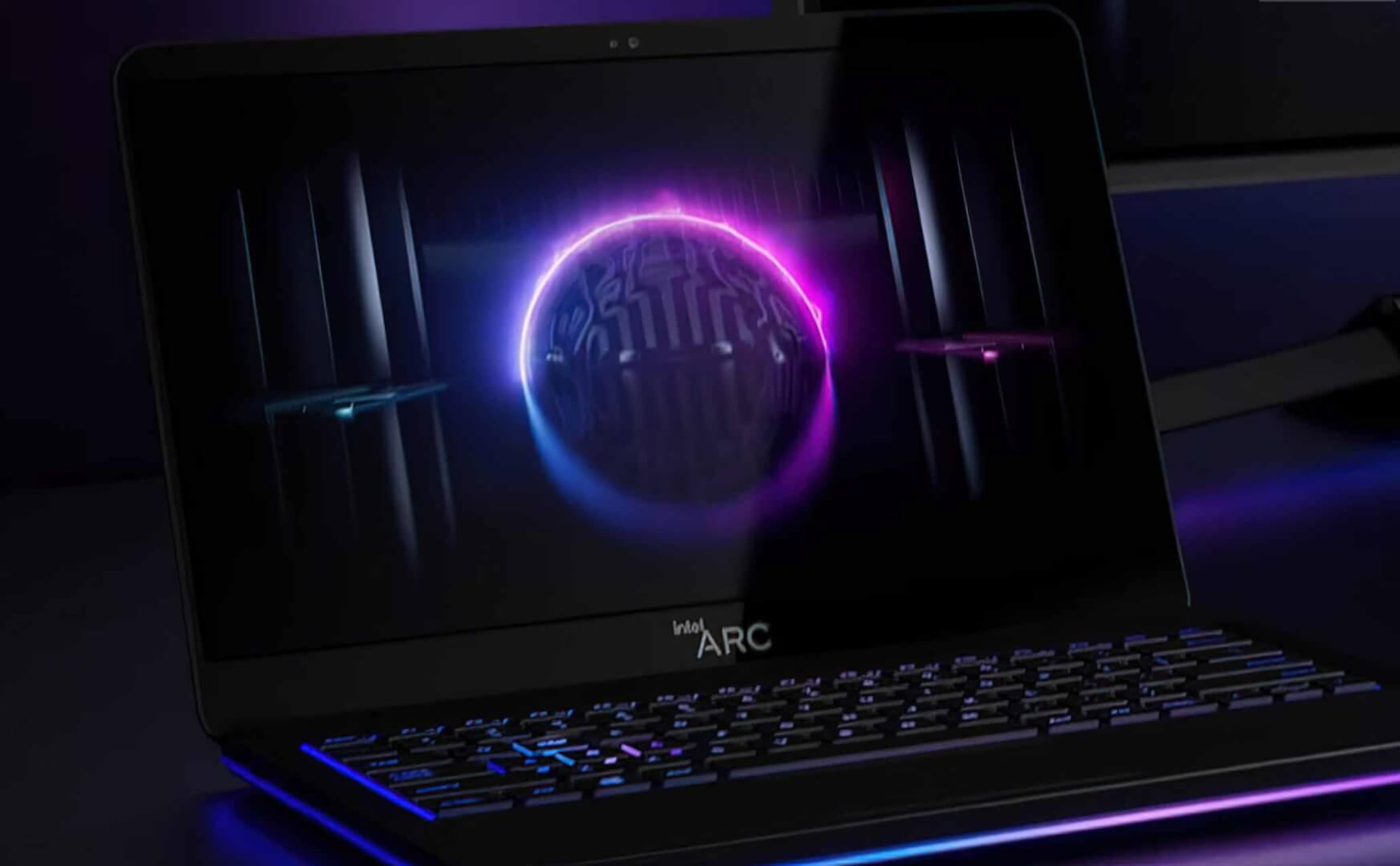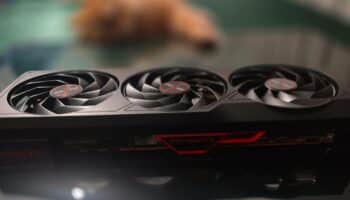Intel’s 1st Gen Arc Alchemist mobile GPUs have been benchmarked and quite honestly, the performance is rather lacking. Figures from Forbes show the Arc A370M (an entry-level) lose rather painfully to the NVIDIA RTX 3050. Even the three-year-old GTX 1650 (NVIDIA’s Turing architecture from 2018) is faster than the A370 in pretty much every game tested by the outlet.
For reference, the GTX 1650 mobility GPU comes with 1,024 shaders and 4GB of GDDR5 memory paired with a 128-bit bus. The A370M also packs 1,024 ALUs across 8 Xe Cores and 4GB of GDDR6 memory across a 64-bit bus. Its only advantage is the inclusion of the RT units and DX12 technologies such as VRS 2.0.

In Shadow of War, a relatively old game, the GTX 1650 is 20% faster than the Arc A370M while the RTX 3050 is ahead by almost 50%.


F1 2021 runs better on the A370M, but it still ends up losing quite horribly to the RTX 3050. The budget Ampere part is 40% faster while the Radeon 680M iGPU on the Ryzen 7 6800U is 36% slower on average. With ray-tracing enabled, the delta between the RTX 3050 and the A370M remains unchanged, but the 680M is just 12 frames slower on average.


In Final Fantasy: Endwalker, the RTX 3050 once again ends up being 50% faster than the Intel Arc A370M while the DX12 version of Shadow of the Tomb Raider sees the delta drop to just 30%. From the looks of it, the Arc GPUs perform fairly well in newer DX12 titles due to reduced driver overhead, something that is a cause of concern in older high-level APIs.






